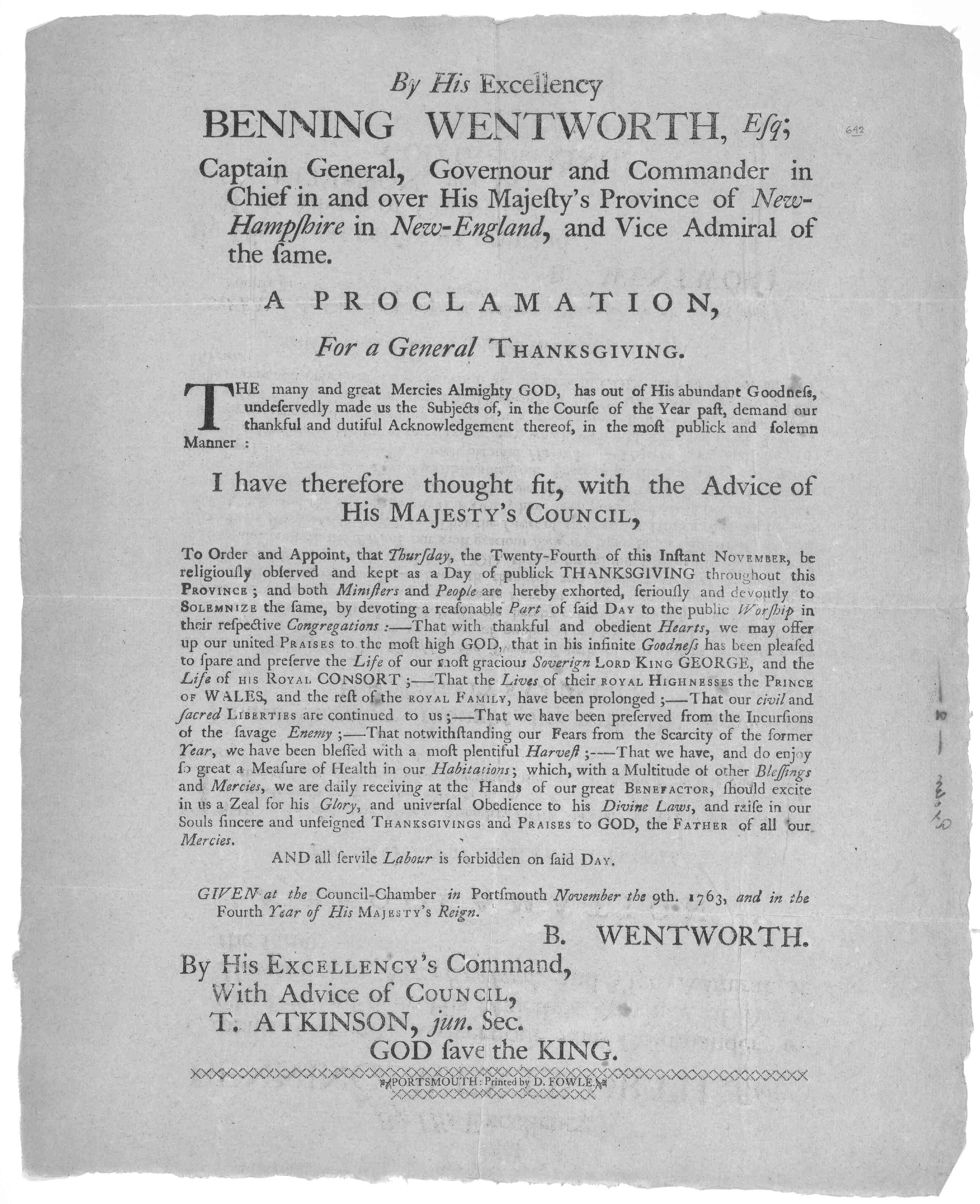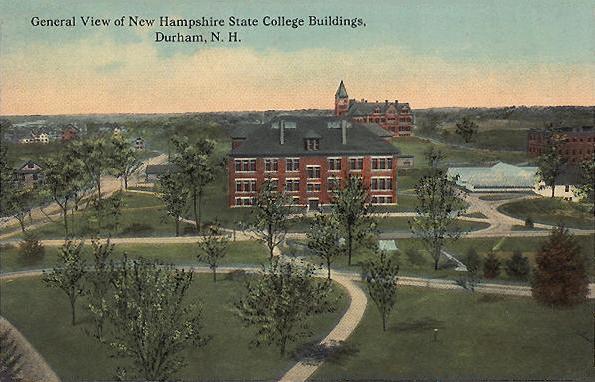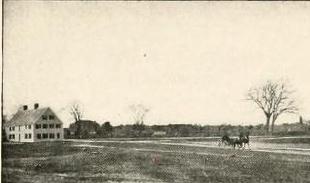|
Thomas Westbrook Waldron
Thomas Westbrook Waldron was a prominent political figure in Dover, New Hampshire, and a military officer that fought in the Siege of Louisbourg (1745), Siege of Louisbourg of 1745. He later became a commissioner at Albany, New York, and then a royal councillor in 1782. During the American Revolution, Waldron abandoned his loyalist friend, British colonial governor of New Hampshire Sir John Wentworth, 1st Baronet, John Wentworth, to become a patriot of the United States. Family Waldron was born into a wealthy family in Dover, New Hampshire. Waldron's great grandfather was Richard Waldron. His grandfather was Thomas Westbrook, who distinguished himself in Father Rale's War. He married Constance Davis of Durham, New Hampshire, about 1755. Of their children, two sons and three daughters had descendants. He was the namesake of many descendants, including two grandsons, one who was Thomas Westbrook Waldron (consul), a Consul that died in Macao, the other moved to Canada. Waldron ... [...More Info...] [...Related Items...] OR: [Wikipedia] [Google] [Baidu] |
John Greenwood (artist)
John Greenwood Sr. (1727–1792) was an early American portrait painter, engraver and auctioneer. Life Greenwood was born on 7 December 1727 in Boston, Massachusetts, and baptized on 10 December in the Old North Church, Boston. His father died insolvent in 1742 and at about this time Greenwood apprenticed to Thomas Johnston, a Boston line engraver, sign painter, and japanner. According to his son's later account, Greenwood soon left Johnston's studio in order to pursue portraiture. He left Boston in 1752 and traveled to the Dutch colony of Surinam in northeast South America. He stayed there for over five years, during which time he executed 115 portraits, before traveling again, this time to Europe, arriving in Amsterdam in May 1758. He settled there for a time to learn the art of making mezzotints, and was documented as a member of the Amsterdam Drawing Academy in 1758 by Jacob Otten Husly. [...More Info...] [...Related Items...] OR: [Wikipedia] [Google] [Baidu] |
American Revolution
The American Revolution was an ideological and political revolution that occurred in British America between 1765 and 1791. The Americans in the Thirteen Colonies formed independent states that defeated the British in the American Revolutionary War (1775–1783), gaining independence from the British Crown and establishing the United States of America as the first nation-state founded on Enlightenment principles of liberal democracy. American colonists objected to being taxed by the Parliament of Great Britain, a body in which they had no direct representation. Before the 1760s, Britain's American colonies had enjoyed a high level of autonomy in their internal affairs, which were locally governed by colonial legislatures. During the 1760s, however, the British Parliament passed a number of acts that were intended to bring the American colonies under more direct rule from the British metropole and increasingly intertwine the economies of the colonies with those of Brit ... [...More Info...] [...Related Items...] OR: [Wikipedia] [Google] [Baidu] |
Benning Wentworth
Benning Wentworth (July 24, 1696 – October 14, 1770) was an American merchant and colonial administrator who served as the governor of New Hampshire from 1741 to 1766. While serving as governor, Wentworth is best known for issuing several land grants in territory claimed by the Province of New Hampshire west of the Connecticut River, which led to disputes with the neighboring colony of New York and the eventual founding of Vermont. Born in Portsmouth, New Hampshire into a prominent colonial family in 1692, Wentworth was groomed by his father John while growing up to assume control over the family business before misbehavior while studying at Harvard College led him to be sent to Boston instead in 1715. There, Wentworth was apprenticed at his uncle's business before becoming a merchant. In 1730, he returned to Portsmouth to assume control over his father's estate. After Wentworth returned to his family, he soon started becoming involved in politics, sitting on both the House ... [...More Info...] [...Related Items...] OR: [Wikipedia] [Google] [Baidu] |
Samuel Waldo (merchant)
Samuel Waldo (August 7, 1696 – May 23, 1759) was an American merchant, land speculator, army officer and politician in the Province of Massachusetts Bay. Biography He was born in Boston, the son of Jonathan Waldo and Hannah Mason. In 1722, he married Lucy Wainwright. In 1730, he purchased a 17th-century title to a large tract of land in Nova Scotia with the intent of establishing a colony there; the title did not stand up when he proposed this plan to the authorities in England. A one-time business partner of Colonel Thomas Westbrook, Waldo acquired a large tract of land between the Penobscot and Muscongus Rivers in what is now Maine where he settled Irish and German immigrants and purchased several slaves. During King George's War, he served as brigadier-general in the reduction on Louisbourg Fortress in 1745 and served on the temporary council that administered the settlement until Peter Warren was named governor. In 1757, during the French and Indian War, he submitted ... [...More Info...] [...Related Items...] OR: [Wikipedia] [Google] [Baidu] |
Canada
Canada is a country in North America. Its ten provinces and three territories extend from the Atlantic Ocean to the Pacific Ocean and northward into the Arctic Ocean, covering over , making it the world's second-largest country by total area. Its southern and western border with the United States, stretching , is the world's longest binational land border. Canada's capital is Ottawa, and its three largest metropolitan areas are Toronto, Montreal, and Vancouver. Indigenous peoples have continuously inhabited what is now Canada for thousands of years. Beginning in the 16th century, British and French expeditions explored and later settled along the Atlantic coast. As a consequence of various armed conflicts, France ceded nearly all of its colonies in North America in 1763. In 1867, with the union of three British North American colonies through Confederation, Canada was formed as a federal dominion of four provinces. This began an accretion of provinces an ... [...More Info...] [...Related Items...] OR: [Wikipedia] [Google] [Baidu] |
Cape Breton Island
Cape Breton Island (french: link=no, île du Cap-Breton, formerly '; gd, Ceap Breatainn or '; mic, Unamaꞌki) is an island on the Atlantic coast of North America and part of the province of Nova Scotia, Canada. The island accounts for 18.7% of Nova Scotia's total area. Although the island is physically separated from the Nova Scotia peninsula by the Strait of Canso, the long Canso Causeway connects it to mainland Nova Scotia. The island is east-northeast of the mainland with its northern and western coasts fronting on the Gulf of Saint Lawrence with its western coast forming the eastern limits of the Northumberland Strait. The eastern and southern coasts front the Atlantic Ocean with its eastern coast also forming the western limits of the Cabot Strait. Its landmass slopes upward from south to north, culminating in the highlands of its northern cape. One of the world's larger saltwater lakes, ("Arm of Gold" in French), dominates the island's centre. The total population ... [...More Info...] [...Related Items...] OR: [Wikipedia] [Google] [Baidu] |
Fortress Of Louisbourg
The Fortress of Louisbourg (french: Forteresse de Louisbourg) is a National Historic Site and the location of a one-quarter partial reconstruction of an 18th-century French fortress at Louisbourg on Cape Breton Island, Nova Scotia. Its two sieges, especially that of 1758, were turning points in the Anglo-French struggle for what today is Canada. The original settlement was made in 1713, and initially called Havre à l'Anglois. Subsequently, the fishing port grew to become a major commercial port and a strongly defended fortress. The fortifications eventually surrounded the town. The walls were constructed mainly between 1720 and 1740. By the mid-1740s Louisbourg, named for Louis XIV of France, was one of the most extensive (and expensive) European fortifications constructed in North America. It was supported by two smaller garrisons on Île Royale located at present-day St. Peter's and Englishtown. The Fortress of Louisbourg suffered key weaknesses, since it was erected on ... [...More Info...] [...Related Items...] OR: [Wikipedia] [Google] [Baidu] |
French People
The French people (french: Français) are an ethnic group and nation primarily located in Western Europe that share a common French culture, history, and language, identified with the country of France. The French people, especially the native speakers of langues d'oïl from northern and central France, are primarily the descendants of Gauls (including the Belgae) and Romans (or Gallo-Romans, western European Celtic and Italic peoples), as well as Germanic peoples such as the Franks, the Visigoths, the Suebi and the Burgundians who settled in Gaul from east of the Rhine after the fall of the Roman Empire, as well as various later waves of lower-level irregular migration that have continued to the present day. The Norse also settled in Normandy in the 10th century and contributed significantly to the ancestry of the Normans. Furthermore, regional ethnic minorities also exist within France that have distinct lineages, languages and cultures such as Bretons in Brittany, Occi ... [...More Info...] [...Related Items...] OR: [Wikipedia] [Google] [Baidu] |
Thomas Westbrook Waldron (consul)
Thomas Westbrook Waldron was a captain's clerk on the Wilkes Expedition, and the first United States consul to Hong Kong."Ceremony Recalls Fallen Diplomats" ''State Magazine'' (Oct 2009), p.8. Accessed 5 September 2010 His service to the United States consular service was honoured by Secretary of State during a ceremony in 2009. [...More Info...] [...Related Items...] OR: [Wikipedia] [Google] [Baidu] |
Durham, New Hampshire
Durham is a town in Strafford County, New Hampshire, United States. The population was 15,490 at the 2020 census, up from 14,638 at the 2010 census.United States Census BureauU.S. Census website 2010 Census figures. Retrieved March 23, 2011. Durham is home to the University of New Hampshire. The primary settlement in the town, where 11,147 people resided at the 2020 census, is defined by the U.S. Census Bureau as the Durham census-designated place (CDP) and includes the densely populated portion of the town centered on the intersection of New Hampshire Route 108 and Main Street, which includes the university that dominates the town. History Durham sits beside Great Bay at the mouth of the Oyster River, an ideal location for people who lived close to the land, like the Western Abenaki and their ancestors who've lived in the region for an estimated 11,000 years. The Shankhassick (now Oyster) River provided shellfish and access to the north woods for hunting and trapping; ... [...More Info...] [...Related Items...] OR: [Wikipedia] [Google] [Baidu] |
Father Rale's War
Dummer's War (1722–1725) is also known as Father Rale's War, Lovewell's War, Greylock's War, the Three Years War, the Wabanaki-New England War, or the Fourth Anglo-Abenaki War. It was a series of battles between the New England Colonies and the Wabanaki Confederacy (specifically the Miꞌkmaq, Maliseet, Penobscot, and Abenaki), who were allied with New France. The eastern theater of the war was located primarily along the border between New England and Acadia in Maine, as well as in Nova Scotia; the western theater was located in northern Massachusetts and Vermont at the border between Canada (New France) and New England. During this time, Maine and Vermont were part of Massachusetts.The Nova Scotia theater of the Dummer War is named the "Mi'kmaq-Maliseet War". John Grenier. ''The Far Reaches of Empire: War in Nova Scotia 1710-1760''. University of Oklahoma Press. 2008. The root cause of the conflict on the Maine frontier concerned the border between Acadia and New England, whic ... [...More Info...] [...Related Items...] OR: [Wikipedia] [Google] [Baidu] |
Thomas Westbrook
Colonel Thomas Westbrook (1675–1743/44) was a senior New England militia officer in Maine during Father Rale's War. In addition to this senior militia role he was a scout, a colonial councillor, an innkeeper, a mill owner, a land speculator and a King's Mast Agent. He is the namesake of Westbrook, Maine. Early years During Queen Anne's War, Westbrook became a ranger in a small company of four (1704). In 1716 the General Assembly of the Province made a grant to Thomas Westbrook, to keep the only public house at the Plains, in consideration that he should lay out six acres of land for the accommodation of drawing up the militia of the town. From at least 1720 he was the owner and proprietor. Father Rale's War During the years 1721-3 Westbrook became a captain in the militia and, after the fall of Colonel Shadrack Walton from favour with Massachusett's acting Governor William Dummer, became the colonel in charge of the militia in the "East" (Maine) A focus during ... [...More Info...] [...Related Items...] OR: [Wikipedia] [Google] [Baidu] |





